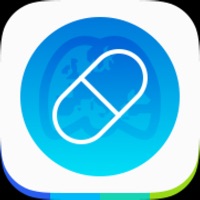
How to Delete NbN3. save (26.47 MB)
Published by European College of Neuropsychopharmacology (ECNP) on 2024-02-04We have made it super easy to delete NbN3 account and/or app.
Table of Contents:
Guide to Delete NbN3 👇
Things to note before removing NbN3:
- The developer of NbN3 is European College of Neuropsychopharmacology (ECNP) and all inquiries must go to them.
- The GDPR gives EU and UK residents a "right to erasure" meaning that you can request app developers like European College of Neuropsychopharmacology (ECNP) to delete all your data it holds. European College of Neuropsychopharmacology (ECNP) must comply within 1 month.
- The CCPA lets American residents request that European College of Neuropsychopharmacology (ECNP) deletes your data or risk incurring a fine (upto $7,500 dollars).
↪️ Steps to delete NbN3 account:
1: Visit the NbN3 website directly Here →
2: Contact NbN3 Support/ Customer Service:
- 75% Contact Match
- Developer: inManage LTD
- E-Mail: secretariat@ecnp.eu
- Website: Visit NbN3 Website
- 54.55% Contact Match
- Developer: inManage LTD
- E-Mail: secretariat@ecnp.eu
- Website: Visit inManage LTD Website
Deleting from Smartphone 📱
Delete on iPhone:
- On your homescreen, Tap and hold NbN3 until it starts shaking.
- Once it starts to shake, you'll see an X Mark at the top of the app icon.
- Click on that X to delete the NbN3 app.
Delete on Android:
- Open your GooglePlay app and goto the menu.
- Click "My Apps and Games" » then "Installed".
- Choose NbN3, » then click "Uninstall".
Have a Problem with NbN3? Report Issue
🎌 About NbN3
1. It has become clear that the current pharmacological nomenclature of psychotropic medications does not reflect our contemporary knowledge, nor does it inform properly the clinician of neuroscience-based prescriptions.
2. • Five international organizations ECNP, ACNP, AsCNP, CINP & IUPHAR decided five years ago to establish a taskforce and gave it the mission to embed our current neuroscience advances in the nomenclature.
3. This proposed nomenclature aims to reflect the current pharmacological knowledge base and cannot necessarily represent the ultimate scientific truth.
4. The taskforce that assembled could have taken the stand that our current knowledge base is not enough to define the primary target or the correct mechanisms of action.
5. Pharmacology and Mode of Action – reflects the current knowledge and understanding about the targeted neurotransmitter/ molecule/system being modified and the mode/mechanism of action.
6. • The scope is to include all the medications with CNS indications and to harness this new nomenclature to help clinicians when they are trying to figure out what would be the next rational “neuropsychopharmacological step”.
7. Efficacy and Side Effects – Driven from positive single, large, RCT and/or “heavy solid weight” clinical data.
8. For those who would like to know more abo derived from empirical data.ut the pharmacology, there is a direct link to the relevant site of IUPHAR – our collaborator in this endeavour.
9. Based on your feedback (and taking into account the feedback of other colleges) new reports and findings, appropriate updates (e.g. later editions) will be undertaken.
10. But as a taskforce, we feel that it’s better to present a cutting-edge scientific interpretation than to wait for the definitive conclusion.
11. We need to treat our patients now, and we cannot postpone treatment until all the facts are known.
12. Very often we prescribe “antidepressants” for “anxiety” disorders or “second-generation antipsychotics” to depressed patients.
13. • In this second edition 22 new medications were added so NbN includes now 130 medications.
14. As this is on-going process, we recognize that the product is imperfect.










